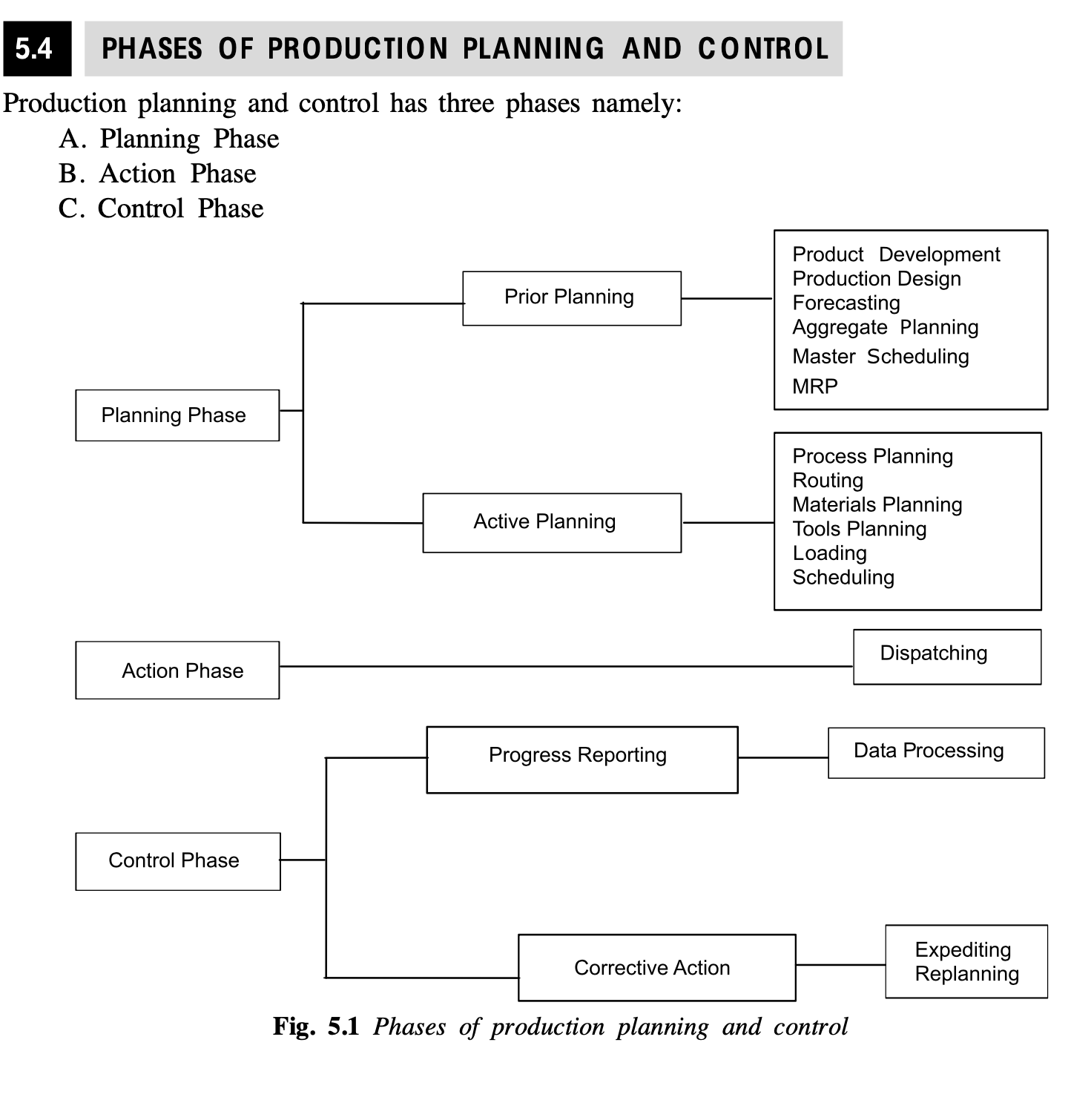Phases of Production Planning and Control
The Production Planning and Control (PPC) process can be broadly understood as occurring in three distinct but interconnected phases: Planning, Action (Implementation), and Control. This structure provides a logical flow from strategic decision-making to shop-floor execution and monitoring.
 (Based on Fig 5.1 in the Production And Operations Management Paperback – 1 July 2018
by S. Anil Kumar)
(Based on Fig 5.1 in the Production And Operations Management Paperback – 1 July 2018
by S. Anil Kumar)
A. Planning Phase:
- Focus: Deciding what needs to be done, when, and how, before actual production begins. It involves forecasting and resource allocation.
-
Sub-Phases:
-
1. Prior Planning (Pre-Production): Longer-term, strategic planning activities.
- Product Development/Design: Defining what will be made.
- Forecasting: Estimating future demand.
- Aggregate Planning: Setting overall production levels for product families.
- Master Production Scheduling (MPS): Detailing which end products and how many per period.
- Material Requirements Planning (MRP): Calculating component and raw material needs (quantity and timing).
-
2. Active Planning (Detailed): Short-term planning just before and during execution.
- Process Planning & Routing: Defining the sequence of operations and machines.
- Materials Planning (Operational): Managing immediate material availability.
- Tools Planning: Ensuring necessary tools are ready.
- Loading: Assigning specific jobs to specific work centers/machines.
- Scheduling: Fixing start and finish times for jobs/operations.
-
1. Prior Planning (Pre-Production): Longer-term, strategic planning activities.
B. Action Phase (Implementation / Dispatching):
- Focus: Translating plans into actual work on the shop floor. Authorizing and initiating production activities.
-
Key Activity:
-
Dispatching: Releasing the necessary orders and instructions to start work. This includes issuing:
- Job Orders / Production Orders
- Material Requisitions / Stores Issue Orders
- Tool Orders
- Time Tickets / Job Cards
- Inspection Orders
- Move Orders
-
Dispatching: Releasing the necessary orders and instructions to start work. This includes issuing:
C. Control Phase:
- Focus: Monitoring progress, comparing actual performance against the plan, and taking corrective action when necessary. Ensures objectives are met.
-
Key Activities:
- 1. Progress Reporting: Collecting data on actual output, quality, time taken, resource consumption, machine status, etc.
- 2. Data Processing & Comparison: Analyzing collected data and comparing it with planned targets (schedules, standards, budgets). Identifying variances.
-
3. Corrective Action: Implementing measures to address significant deviations from the plan. This can involve:
- Expediting: Rushing delayed jobs.
- Replanning / Rescheduling: Adjusting schedules due to major issues.
- Addressing Root Causes: Investigating why deviations occurred and fixing underlying problems (e.g., machine repair, process adjustment, operator retraining).
- Feedback: Communicating performance information back to the planning phase for future improvements.
Indian Example: A construction company like L&T Construction follows these phases for a project. Planning involves designing the structure, forecasting resource needs (cement, steel, labor), creating a master schedule (MPS equivalent), planning material deliveries (MRP equivalent), and detailed weekly scheduling. Action (Dispatching) involves issuing work orders to site engineers and material release requests. Control involves site supervisors reporting daily progress, comparing it against the schedule, identifying delays (e.g., due to rain, material shortage), and taking corrective action (e.g., arranging alternative suppliers, working overtime - expediting).
These three phases form a continuous cycle, where the output and feedback from the Control phase inform future Planning efforts.

No Comments